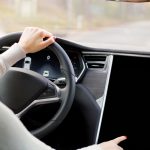Tesla‘s Full Self-Driving (FSD) feature has faced criticism for its rigorous driver monitoring system, which sometimes overshadows its innovative capabilities. The suite’s cabin-facing camera checks driver alertness, but its stringent measures can overlook practical driving scenarios, leaving users like myself experiencing unscheduled interruptions. Recent interactions by Elon Musk indicate potential modifications to ease these frustrations, although exact changes remain unspecified. Tesla’s attention to safety is commendable, yet the balance between innovation and user experience appears to be an ongoing challenge. As the automotive industry continues to evolve around autonomous technologies, Tesla’s approach will be closely watched.
Previous reports have noted Tesla’s commitment to safety with the Autopilot system, claiming it significantly reduces accident rates compared to human drivers. Nevertheless, some users voice concerns about the constant alerts issued by the FSD’s monitoring feature. Comparatively, while these measures are rooted in caution, they contribute to debates about autonomy and the responsibilities of drivers. As Tesla moves to address these annoyances, their capability to effectively streamline user interaction without compromising safety is anticipated by many.
Why is Driver Monitoring Necessary?
The driver monitoring feature is designed to ensure that neither drivers nor passengers misuse Tesla’s Full Self-Driving technology. With a focus on enhancing safety, the system temporarily disables FSD if the driver’s attention wavers. However, many drivers have reported inconveniences while making necessary adjustments like altering cabin temperature or mirror orientation, prompting Tesla to revisit this approach. The system’s choice to disengage FSD during minor distractions is seen as overly cautious by some users, highlighting a need for improved user interaction.
How Could Tesla Adjust Safety Protocols?
Potential modifications that Tesla might introduce to its FSD suite aim to provide a smoother user experience without sacrificing safety. By responding to user feedback, the company could refine the balance between maintaining vigilance and ensuring smooth operation. Adjustments mentioned by Musk could include changes to the timing or sensitivity of alerts, allowing for small adjustments to be made without interrupting FSD functionality. This highlights an ongoing evolution in how technological advancements can best serve their users while prioritizing safety.
Are User Complaints Valid?
Many Tesla users express frustration over frequent alerts while performing routine activities like altering the speed offset or enjoying a snack. The tendency of the monitoring system to issue warnings during momentary lapses—often less than ten seconds—brought this issue to the forefront. Musk’s acknowledgment of these concerns could lead to the corrections desired by Tesla owners, demonstrating the company’s attentiveness to consumer needs. Responding to user feedback with tangible changes could bolster the brand’s reputation for innovation.
Tesla’s potential improvements to its driver monitoring system in the FSD suite mark a significant step in addressing user concerns while maintaining high safety standards. Balancing these priorities requires careful consideration, especially in an era where public expectations for autonomous driving are evolving. As Tesla plans to modify its approach, the outcomes may set a precedent for how other automakers develop similar technologies. Insights from users will continue to play a crucial role, offering a clearer understanding of how automation can coexist with human interaction seamlessly.










